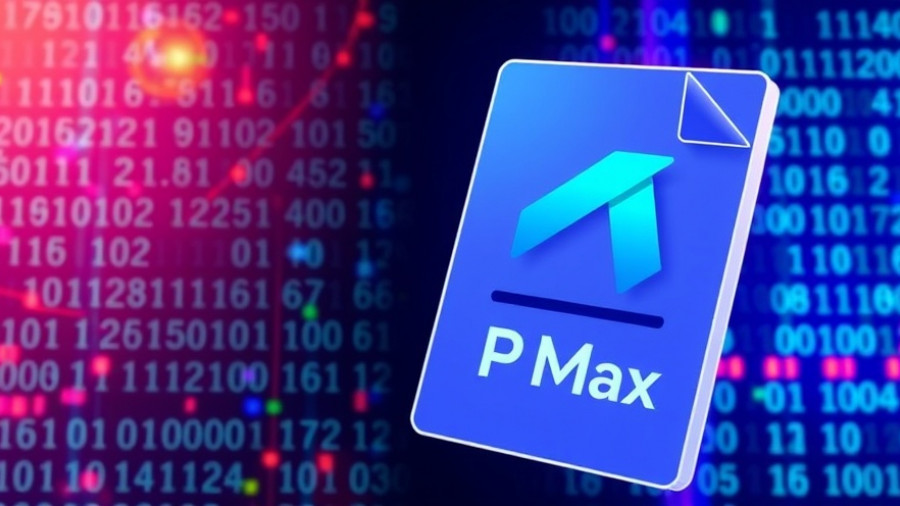
Google's Evolution Towards Automation: Understanding Suggested Assets
In the ever-evolving world of digital marketing, automation is becoming an integral part of how businesses manage their advertising strategies. Google’s latest update to Performance Max (PMax) campaigns introduces the innovative Suggested Assets feature. This tool allows for a more automated approach, leveraging Google's advanced machine learning capabilities to enhance your asset strategy effectively.
The Essence of Suggested Assets in PMax
The Suggested Assets feature automatically generates various assets designed to align with user search behaviors and performance metrics. By analyzing your landing page and existing asset performance, Google’s AI can recommend new text headlines, descriptions, and relevant images tailored for your campaigns. This includes:
- Text Assets: Custom headlines and descriptions geared towards improving relevance with user searches.
- Visual Assets: Images sourced from your linked website or Google’s recommendations that are contextually relevant to your campaign goals.
- Sitelinks: New sitelink suggestions targeting high-value pages that resonate with user intent.
Seamless Integration: How to Activate Suggested Assets
Activating suggested assets within your Google Ads account is straightforward. When creating or editing an Asset Group, a prompt will encourage you to view suggested assets. With just a click, you can add or dismiss suggestions, facilitating faster asset curation for your campaigns. The streamlined dashboard enhances user experience by enabling quick decisions based on AI recommendations.
Why Suggested Assets Are Game-Changers for PPC Managers
This new feature represents a shift in PPC management, offering increased efficiency and effectiveness in managing ads. By automating asset generation, PPC managers can save substantial time, allowing them to focus more on strategic decision-making rather than tedious manual tasks. Not only that, but the AI-generated suggestions provide insights based on proven search patterns, which can help optimize ad engagement and improve return on ad spend (ROAS).
Challenges and Risks: The Flip Side of Automation
Despite the advantages, the Suggested Assets feature also poses new risks. Relying heavily on automation without adequate oversight can lead to budget mismanagement and potential dilution of the brand voice. The risk of generating assets that miss the brand’s tone can lead to ineffective ads and wasted ad spend. Thus, it remains crucial for PPC managers to act as the strategic filters, ensuring all adopted suggestions align with company values and campaign goals.
Actionable Insights: Resolving Potential Conflicts in Targeting
As marketers utilize the Suggested Assets, the principles of strategic rejection and informed adoption become paramount. Dismissing irrelevant or poorly aligned assets offers diagnostic insights into potential gaps in your landing page, pushing marketers to refine their messaging and content. In contrast, assets that resonate should be viewed as hypotheses that warrant further testing before full implementation.
Maximizing Utility: Tips to Harness Suggested Assets Effectively
To fully leverage Suggested Assets, consider the following strategies:
- 70/30 Review Process: Commit to reviewing at least 70% of suggested assets, ensuring brand safety and strategic alignment.
- Monitor Sitelink Suggestions: Evaluate the AI-generated sitelinks carefully; they can illuminate new opportunities for user engagement.
- Continuous Testing: Transition adopted assets into testing scenarios to measure actual performance against your established KPIs.
- Regular Refresh Plans: Schedule routine audits of your assets to mitigate creative fatigue and maintain campaign momentum.
Conclusion: Embracing Automation with Care
Incorporating Google’s Suggested Assets within your Performance Max campaigns signifies a pivotal step toward a more automated future in PPC advertising. As marketers, it's crucial to take this opportunity not just for operational efficiency but also for enhancing ad relevance and effectiveness. Review your asset strategy now, and capitalize on the evolving landscape of automated marketing while maintaining a firm grip on brand principles.
Get started today by exploring how Suggested Assets can transform your ad campaigns and maximize ROI!
 Add Row
Add Row  Add
Add 




Write A Comment